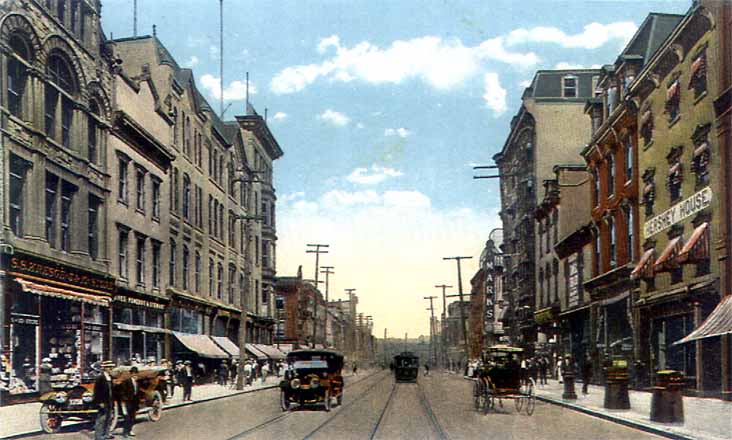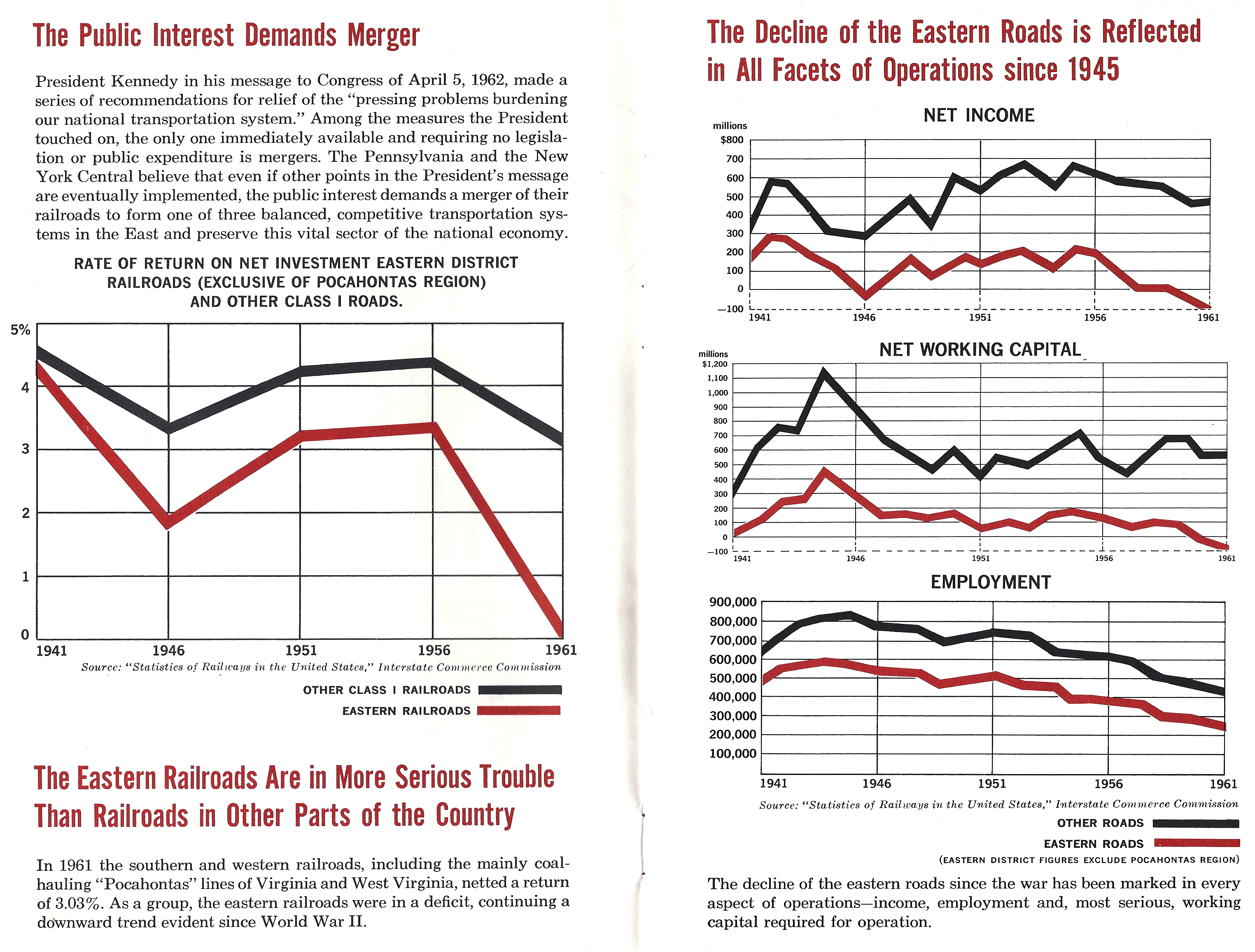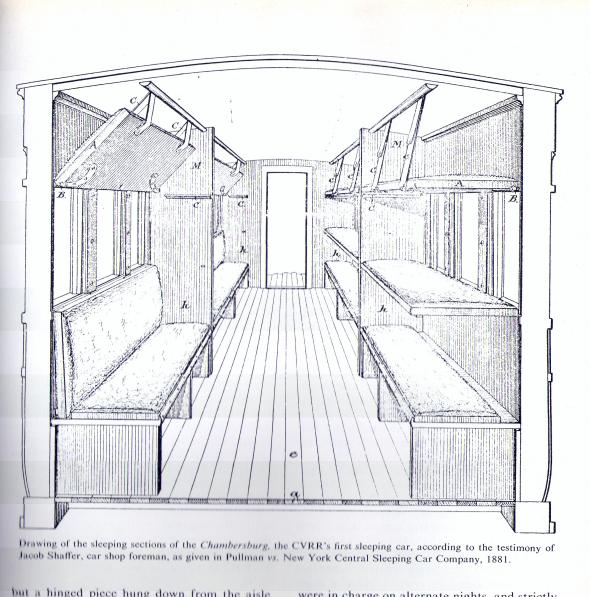|
Harrisburg Transportation Center
The Harrisburg Transportation Center (HTC, formerly Pennsylvania Station, Harrisburg or Harrisburg Central Railroad Station) is a large railway station and transportation hub in Harrisburg, Pennsylvania. It is located on the eastern edge of Downtown Harrisburg between the intersections of Aberdeen and Market Streets and 4th and Chestnut Streets. The well-situated station is the primary hub for passenger rail and intercity bus services in the Harrisburg metropolitan area and South Central Pennsylvania. History The current station is the third on the site. Though technically a union station (meaning it was used by several railways), it was never identified as such in publications such as the Official Guide of the Railroads and Steam Navigation Lines or Pennsylvania Railroad Timetables. The first two stations were shared by the Pennsylvania Railroad (PRR), Reading Railroad, Northern Central Railway (NCR), and the Cumberland Valley Railroad (CVR). The third (and current) station ... [...More Info...] [...Related Items...] OR: [Wikipedia] [Google] [Baidu] |
Harrisburg, Pennsylvania
Harrisburg is the capital city of the Commonwealth of Pennsylvania, United States, and the county seat of Dauphin County. With a population of 50,135 as of the 2021 census, Harrisburg is the 9th largest city and 15th largest municipality in Pennsylvania. Harrisburg is situated on the east bank of the Susquehanna River. It is the larger principal city of the Harrisburg–Carlisle metropolitan statistical area, also known as the Susquehanna Valley, which had a population of 591,712 as of 2020, making it the fourth most populous metropolitan area in Pennsylvania after the Philadelphia, Pittsburgh, and Lehigh Valley metropolitan areas. Harrisburg played a role in American history during the Westward Migration, the American Civil War, and the Industrial Revolution. During part of the 19th century, the building of the Pennsylvania Canal and later the Pennsylvania Railroad allowed Harrisburg to develop into one of the most industrialized cities in the Northeastern United Stat ... [...More Info...] [...Related Items...] OR: [Wikipedia] [Google] [Baidu] |
South Central Pennsylvania
South Central Pennsylvania is a region of the U.S. state of Pennsylvania that includes the fourteen counties of Adams, Cumberland, Dauphin, Franklin, Huntingdon, Juniata, Lancaster, Lebanon, Mifflin, Perry, Snyder, and York. Portions of western Schuylkill and southern Northumberland counties are also located in South Central Pennsylvania. Despite the designation South Central Pennsylvania, many of the counties are geographically located in the southeastern portion of the state. Lancaster, with a population of 59,322, is the largest city in the region, and the second largest metropolitan area. Harrisburg, with a population of 49,528, is the second largest city in the region, and has the largest metropolitan area with a population of 643,820 people, and is the capital of Pennsylvania. York is the other significant city in the region. The Harrisburg-Lancaster-York television market, which includes Adams, Cumberland, Dauphin, Franklin, Juniata, Lancaster, Lebanon, Miffl ... [...More Info...] [...Related Items...] OR: [Wikipedia] [Google] [Baidu] |
Pennsylvania Historical And Museum Commission
The Pennsylvania Historical and Museum Commission (PHMC) is the governmental agency of the Commonwealth of Pennsylvania responsible for the collection, conservation and interpretation of Pennsylvania's historic heritage. The commission cares for historical manuscripts, public records, and objects of historic interest; museums; archeology; publications; historic sites and properties; historic preservation; geographic names; and the promotion of public interest in Pennsylvania history. PHMC was established June 6, 1945, by state Act No. 446, merging the Pennsylvania Historical Commission (PHC), Pennsylvania State Museum and Pennsylvania State Archives. The commission is an independent administrative board, consisting of nine citizens of the Commonwealth appointed by the Governor; the Secretary of Education ex officio; two members of the Senate appointed by the President Pro Tempore and Minority Leader; and two members of the House of Representatives appointed by the Speaker and ... [...More Info...] [...Related Items...] OR: [Wikipedia] [Google] [Baidu] |
National Historic Landmark
A National Historic Landmark (NHL) is a building, district, object, site, or structure that is officially recognized by the United States government for its outstanding historical significance. Only some 2,500 (~3%) of over 90,000 places listed on the country's National Register of Historic Places are recognized as National Historic Landmarks. A National Historic Landmark District may include contributing properties that are buildings, structures, sites or objects, and it may include non-contributing properties. Contributing properties may or may not also be separately listed. Creation of the program Prior to 1935, efforts to preserve cultural heritage of national importance were made by piecemeal efforts of the United States Congress. In 1935, Congress passed the Historic Sites Act, which authorized the Interior Secretary authority to formally record and organize historic properties, and to designate properties as having "national historical significance", and gave the Nati ... [...More Info...] [...Related Items...] OR: [Wikipedia] [Google] [Baidu] |
National Register Of Historic Places
The National Register of Historic Places (NRHP) is the United States federal government's official list of districts, sites, buildings, structures and objects deemed worthy of preservation for their historical significance or "great artistic value". A property listed in the National Register, or located within a National Register Historic District, may qualify for tax incentives derived from the total value of expenses incurred in preserving the property. The passage of the National Historic Preservation Act (NHPA) in 1966 established the National Register and the process for adding properties to it. Of the more than one and a half million properties on the National Register, 95,000 are listed individually. The remainder are contributing resources within historic districts. For most of its history, the National Register has been administered by the National Park Service (NPS), an agency within the U.S. Department of the Interior. Its goals are to help property owners a ... [...More Info...] [...Related Items...] OR: [Wikipedia] [Google] [Baidu] |
Buffalo Day Express
The ''Buffalo Day Express'' was a long-distance north–south Pennsylvania Railroad passenger train from Washington, D.C. to Buffalo, New York. It had a second branch that originated in Philadelphia, Pennsylvania, and at times, from New York, New York. In the southbound direction, the train ran by the name, ''Washington Express.'' It was the longest running of trains on the Washington-Buffalo route, north through central Pennsylvania on the Buffalo Line, operating from 1900 to the latter years of the 1960s, with a shortened segment until 1971. Route and equipment From Washington, the train's route went northeast to Baltimore on the Pennsy's electrified Washington–New York mainline. At Baltimore, the train diverged to the PRR's Northern Central Railway subsidiary line north to York and Harrisburg, Pennsylvania. Because of the way the tracks were aligned at Baltimore Penn Station, it was necessary for the train's cars to face rearward for the short journey between Wash ... [...More Info...] [...Related Items...] OR: [Wikipedia] [Google] [Baidu] |
Penn Central
The Penn Central Transportation Company, commonly abbreviated to Penn Central, was an American class I railroad that operated from 1968 to 1976. Penn Central combined three traditional corporate rivals (the Pennsylvania, New York Central and the New York, New Haven and Hartford railroads), all united by heavy service into the New York metropolitan area and (to a lesser extent) New England and Chicago. The new company failed barely two years after formation, the largest bankruptcy in U.S. history at the time. The Penn Central's railroad assets were nationalized into Conrail along with the other bankrupt northeastern roads; its real estate and insurance holdings successfully reorganized into American Premier Underwriters. History Pre-merger The Penn Central railroad system developed in response to challenges facing northeastern American railroads during the late 1960s. While railroads elsewhere in North America drew revenues from long-distance shipments of commodities ... [...More Info...] [...Related Items...] OR: [Wikipedia] [Google] [Baidu] |
Queen Of The Valley
The ''Queen of the Valley'' was a named train of the Central Railroad of New Jersey (CNJ) that ran between Jersey City, New Jersey, and Harrisburg, Pennsylvania, via the Lehigh Valley and Reading. The train took about 4 hours to traverse the route, the longest in the CNJ system (exceeding the Atlantic City-bound '' Blue Comet.'') First operated in 1911, it was the longest-running train of the CNJ when discontinued in 1967. Route From Communipaw Terminal in Jersey City, the ''Queen of the Valley'' traveled south to Bayonne Bayonne (; eu, Baiona ; oc, label= Gascon, Baiona ; es, Bayona) is a city in Southwestern France near the Spanish border. It is a commune and one of two subprefectures in the Pyrénées-Atlantiques department, in the Nouvelle-Aquitaine re ... (but not stopping, until the train's later years),''Official Guide of the Railways,'' June 1961, Central Railroad of New Jersey section traversed the harbor at Elizabethport, headed west along the CNJ's Mai ... [...More Info...] [...Related Items...] OR: [Wikipedia] [Google] [Baidu] |
Train Station
A train station, railway station, railroad station or depot is a railway facility where trains stop to load or unload passengers, freight or both. It generally consists of at least one platform, one track and a station building providing such ancillary services as ticket sales, waiting rooms and baggage/freight service. If a station is on a single-track line, it often has a passing loop to facilitate traffic movements. Places at which passengers only occasionally board or leave a train, sometimes consisting of a short platform and a waiting shed but sometimes indicated by no more than a sign, are variously referred to as "stops", " flag stops", " halts", or "provisional stopping places". The stations themselves may be at ground level, underground or elevated. Connections may be available to intersecting rail lines or other transport modes such as buses, trams or other rapid transit systems. Terminology In British English, traditional terminology favours ''railwa ... [...More Info...] [...Related Items...] OR: [Wikipedia] [Google] [Baidu] |
Cumberland Valley Railroad
The Cumberland Valley Railroad was an early railroad in Pennsylvania, United States, originally chartered in 1831 to connect with Pennsylvania's Main Line of Public Works. Freight and passenger service in the Cumberland Valley in south central Pennsylvania from near Harrisburg to Chambersburg began in 1837, with service later extended to Hagerstown, Maryland, and then extending into the Shenandoah Valley to Winchester, Virginia. It employed up to 1,800 workers.Cumberland Valley Railroad Historical Marker - Behind the Marker During the American Civil War the line had strategic importance in supplying Union troops in the Shenandoah Valley. It also ran the first passenger sleeping car in the U.S. on the Chambersburg-Harrisburg route in 1839.Philip Berlin Historical Marker - Behind the Marker The Pennsylvania Railroad (PRR) gained control of the CVRR as early as 1859, and officially purchased it on June 2, 1919. The PRR's successor, the Penn Central, closed all railway facilities in C ... [...More Info...] [...Related Items...] OR: [Wikipedia] [Google] [Baidu] |
Northern Central Railway
The Northern Central Railway (NCRY) was a Class I Railroad connecting Baltimore, Maryland with Sunbury, Pennsylvania, along the Susquehanna River. Completed in 1858, the line came under the control of the Pennsylvania Railroad (PRR) in 1861, when the PRR acquired a controlling interest in the Northern Central's stock to compete with the rival Baltimore and Ohio Railroad (B&O). For eleven decades the Northern Central operated as a subsidiary of the PRR until much of its Maryland trackage was washed out by Hurricane Agnes in 1972, after which most of its operations ceased as the Penn Central declined to repair sections. It is now a fallen flag railway, having come under the control of the later Penn Central (merger of the PRR and the New York Central), Conrail, and then broken apart and disestablished. The northern part in Pennsylvania is now the York County Heritage Rail Trail which connects to a similar hike/bike trail in Northern Maryland down to Baltimore, named the Tor ... [...More Info...] [...Related Items...] OR: [Wikipedia] [Google] [Baidu] |
Reading Railroad
The Reading Company ( ) was a Philadelphia-headquartered railroad that provided passenger and commercial rail transport in eastern Pennsylvania and neighboring states that operated from 1924 until its 1976 acquisition by Conrail. Commonly called the Reading Railroad, and logotyped as Reading Lines, the Reading Company was a railroad holding company for the majority of its existence and was a single railroad during its later years. It operated service as Reading Railway System and was a successor to the Philadelphia and Reading Railway Company, founded in 1833. Until the decline in anthracite loadings in the Coal Region after World War II, it was one of the most prosperous corporations in the United States. Competition with the modern trucking industry that used the interstate highway system for short-distance transportation of goods, also known as short hauls, compounded the company's problems, forcing it into bankruptcy in 1971. Its railroad operations were merged into Co ... [...More Info...] [...Related Items...] OR: [Wikipedia] [Google] [Baidu] |






.jpg)


